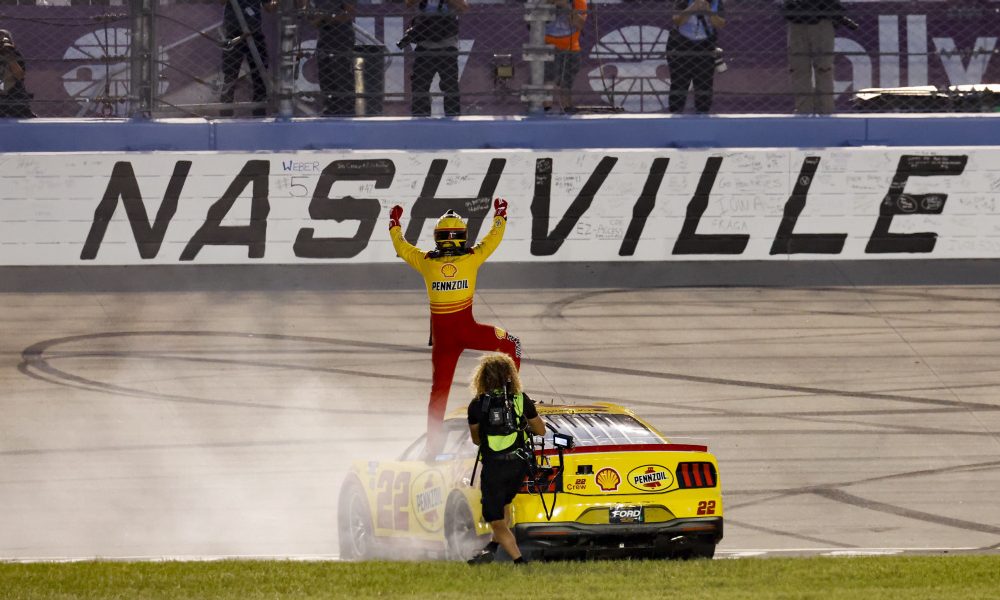Paul Wolfe came close to calling Joey Logano down pit road for fuel before the final overtime attempt at Nashville Superspeedway but figured the team had gone that far, and it was worth the gamble to stick it out.
Logano made it work and drove a stumbling fuel tank across the finish line for the No. 22 team’s first win. A win that cliches the Team Penske group a spot in the postseason instead of bouncing around the bubble spot.
[lawrence-auto-related count=3 category=1428]
Wolfe and Logano went 110 laps on their final tank of fuel. A rash of cautions in the final stage, including five overtime attempts, helped make the risk pay off.
“It was (a hard decision to stay on track), and I was so close to calling him down that last one because, at that point, you’re only so accurate,” Wolfe said. “My engineers are figuring the fuel mileage manually, and then we have simulations tools and things predicting how many laps we can run, which is based … you can tell when the engine’s running how much Joey’s saving. And they weren’t totally lining up. But I went with the one that told us we could run the longest. But that last one, that one said we were running out, so at that point, it was very tough.
“I thought it was worth the risk. It’s hard … I know we’re on the points cuff, but you have to figure over the next few weeks someone else is going to win a race, and then it’s all about winning, I feel like. So, I think that made the decision a little easier knowing someone else behind us in points is pretty likely to win a race with all the different style tracks coming up as we lead into the playoffs.”
The fuel window for Nashville Superspeedway is approximately 80 laps. But with Logano running in the middle of the field as opposed to in clean air as the leader, plus the caution periods, the variables fell his way.
Logano was running 15th with 15 laps to go (lap 285) in the race’s scheduled distance. His final pit stop was on lap 221, when the team also elected to take two tires. When the caution came out with two laps to go, setting up the first overtime, Logano restarted seventh, having moved up in the running order because of those who pitted in front of him and through the choose rule.
For the second and third overtime attempts, Logano restarted fifth. He moved into third position at the time of the caution that set up the fourth overtime restart, and he was the leader for that attempt because Denny Hamlin and Martin Truex Jr. had to pit for fuel in front of him.
Logano held serve on the fourth and fifth overtime restarts. But as he crossed the finish line, he told his team he was out of fuel. And yet, somehow, Logano returned to do a burnout before going to victory lane.
“We felt good it was full when we made that last stop, and at that point, I think we said we were 10 laps to the good,” Wolfe said. “If it ran regular distance, we felt we could run to (lap) 310. The first overtime, my guys were like, ‘We’re all right. We can maybe do one more.’ Then another one came, and it was like, we’re pushing it, but I think we can do it.
“Then after the second one, yeah, it was nerve-wracking for sure. By the last one, I was kind of numb to it at that point. I’m like, ‘It is what it is.’ I said, ‘If you feel it stumble, bring it to us.’ It was a big roller coaster of emotions there going through all those late-race overtime cautions.”
